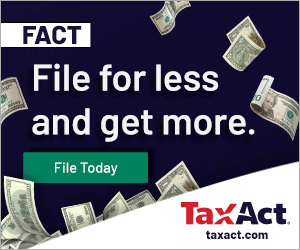How to Tell If You Are Self-Employed


File your business taxes with confidence.
Backed by our $100k accuracy guarantee.
Updated for tax year 2023.
If you’re a freelancer, it’s critical to know whether you’re self-employed or an employee, as the distinction significantly affects your tax responsibilities. Let’s review some of the differences and how to tell which category you fall under if you’re unsure.
At a glance:
- Being self-employed means managing your taxes yourself; unlike traditional employees, you’re accountable for paying income taxes, Medicare, and Social Security taxes.
- While traditional employers issue W-2 forms for incomes above $600, freelancers receive 1099-NEC forms from clients for projects over $600.
Categories of self-employed workers
Generally, the Internal Revenue Service (IRS) considers you to be self-employed if you fall into any of the following categories of individuals who carry on a trade or business:
- Sole proprietor: A “solo” is one person who owns an unincorporated business.
- Limited Liability Company (LLC): An LLC combines some tax and other advantages of a corporation and a partnership. An LLC can consist of a sole member or multiple members.
- Independent contractor: Generally, you might be an independent contractor if you have the power to decide when, where, and how you work on a specific project. If you fall into this category, you might also refer to yourself as a freelancer.
- Member of a partnership: A partnership comprises at least two people engaged in a business who share the profits and losses from that business.
Self-employed on a part-time basis
It’s important to understand you don’t have to work full-time in your business venture to be classified as self-employed. You might work for one employer, but you’re also self-employed, performing tasks or services for several freelance clients.
For example, you could be a project manager at a traditional 9-to-5 job with a side gig as a consultant or caretaker.
Why it matters whether you’re self-employed
If you’re self-employed, your tax position vastly differs from a traditional employee’s. The major distinction? Self-employed individuals are responsible for paying their own taxes.
If you’re traditionally employed or considered a household employee, your employer must withhold income tax and amounts for Medicare and Social Security from your paycheck. They are responsible for reporting and remitting those dollars to the tax authorities.
When you work for yourself, those company responsibilities are now your own.
Tax reporting
When you work for a traditional employer, they mail a Form W-2, Wage, and Tax Statement to any employee who earned at least $600 in wages at the end of the year. Household employees like nannies or cleaning people have a slightly different threshold — your employer must give you a W-2 and withhold taxes if you earned at least $2,600 as a household employee in 2023. For more information on the nanny tax, check out Nanny taxes: A complete guide from care.com.
However, when you freelance, the situation is a bit different. A freelance client sends a Form 1099-NEC, Nonemployee Compensation, to any freelancer they paid at least $600 for a dedicated project or service.
Additionally, if you were paid via a payment card or third-party payment company (e.g., PayPal, Stripe, Square) for at least $20,000 (and had at least 200 transactions) in 2023, you should receive a Form 1099-K, Payment Card and Third Party Network Transactions, from each entity that met those thresholds. For example, if you had at least 200 transactions and at least $20,000 of payments in both PayPal and Square in 2023, you would receive two different 1099-K forms detailing your transactions — one from PayPal and one from Square. This threshold will drop to $5,000 with no transactions minimum beginning in 2024.
NOTE: If a third-party payment company properly sends you a Form 1099-K, the freelance client should NOT also issue you a Form 1099-NEC. Otherwise, your income might be taxed twice.
Self-employed tax responsibilities
If you’re self-employed, you’re required to pay the IRS (and possibly state taxing authorities) directly; you don’t have an employer to take care of it for you.
In addition, you may be required to pay your taxes every quarter rather than annually on the mid-April filing date. That’s because the IRS expects you to pay the taxes you owe as you earn the money, like you would if you were an employee who has taxes withheld from each paycheck.
Whenever you start working on a project, it’s important to immediately determine how you should be classified in that particular work situation. If you’re self-employed, make sure you promptly pay your taxes to avoid any penalties or headaches later.
As a business owner, paying your taxes on time will help you avoid stressful tax audits and instead allow you to concentrate on what matters — growing your business.






